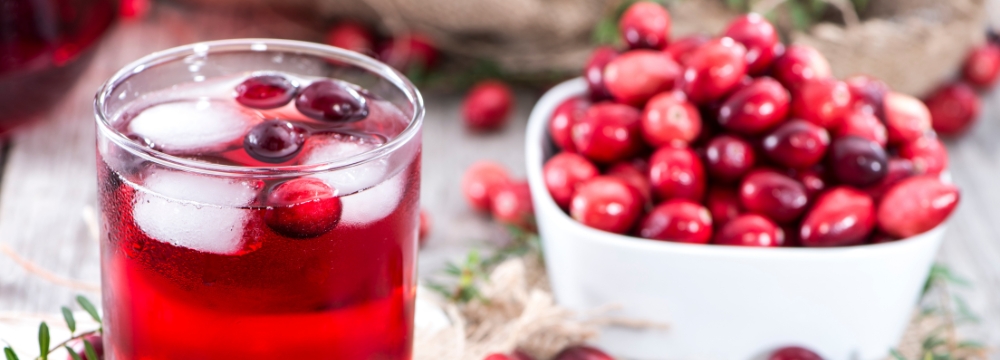UTIs, Sex, and Cranberries

It may occur more frequently in women, but men can and do experience urinary tract infections (UTIs). The way these infections start is generally the same across genders, but their development can vary due to differences in anatomy and physiology. In this article, we’ll explore what causes UTIs in men, how they can affect sexual health, and whether cranberries deserve their reputation as a natural remedy.
What Is a UTI and What Causes Them in Men?
A UTI is caused by bacteria colonizing parts of the urinary system: the lower urinary tract, which includes the urethra (the tube that carries urine out of the body) and bladder, and the upper urinary tract, which includes the ureters (the tubes that connect the kidneys to the bladder) and kidneys. The deeper the infection moves into the urinary tract, the more serious it gets. When it settles in the bladder, it’s called cystitis (a bladder infection); if it reaches the kidneys, it becomes pyelonephritis, which is a much more serious condition. As the severity increases, so does the intensity of treatment.
The male urethra is longer than the female urethra, which usually provides natural defense by making it more difficult for bacteria to reach the bladder. However, it still occasionally finds its way up there. The most common culprit bacteria in UTIs for both genders is Escherichia coli (E. coli), which usually lives harmlessly in the intestines but can travel to the urinary tract and cause infection. How do the bacteria get from the gut to the urinary tract in men? Bowel movements, sexual activity, prolonged use of catheters, or poor hygiene. Bacterial growth is also more likely when factors like urinary retention, an enlarged prostate, low water intake, sexually transmitted infections, or urethral stricture (narrowing) are present.
Symptoms of a UTI in the lower urinary tract include a persistent urge to urinate, pain or burning while urinating, increased frequency with lower output, cloudy or bloody urine, a strong odor to the urine, or pain in the abdomen above the pubic bone. If the infection reaches the kidneys, additional symptoms may include flank pain or lower back pain, fever, chills, nausea, brain fog, or restlessness.
For men, UTIs may also be complicated by other conditions such as urethritis (inflammation of the urethra) or prostatitis (inflammation of the prostate gland). These conditions can coexist with or mimic symptoms of a UTI and influence treatment strategies. Urine culture and susceptibility tests, which check for the specific bacteria causing the infection and determine which antibiotics are most effective against it, are recommended to guide proper treatment, especially given the growing concern over antibiotic resistance.¹
How UTIs Impact Sexual Health
UTIs can definitely put a damper on your sex life. Sexual intercourse can sometimes be the trigger that introduces bacteria into the urinary tract, and an existing UTI can make the act incredibly uncomfortable. Infections inflame and irritate the urinary tract, causing dyspareunia (pain during intercourse), urinary urgency, and increased frequency, not exactly a recipe for the most romantic evening.
When looking at sex as a catalyst for a urinary tract infection, the idea is that bacteria from the genital or anal areas can enter the urethra during intercourse. For men, simple hygiene practices like washing the foreskin before and after sex and using condoms can help reduce the risk.
Engaging in sexual activity with an active infection can worsen symptoms or slow down recovery because sexual contact introduces new bacteria and mixes bodily fluids in a way that encourages reinfection. Oral sex is also a potential route for bacterial transmission, which can further contribute to UTIs. Because of these risks, healthcare providers typically recommend avoiding sexual activity during an active infection until symptoms have fully cleared. (It’s also usually self-limiting because it can be so uncomfortable!)
Cranberry Juice for UTIs: Myth or Fact?
After the discomfort, disrupted routines, and pause in your sex life from having a UTI, it makes sense to explore ways of avoiding another one. The growing concern over antibiotic resistance also makes natural preventative strategies even better. Cranberry juice is one of the most talked-about home remedies, but what does science say about its effectiveness? There’s no sure-fire answer… but:
Cranberries contain several bioactive compounds (proanthocyanidins [PACs], flavonoids, and phenolic acids) that inhibit the adherence of bacteria to the cells lining the urinary tract, potentially preventing UTIs since bacterial adhesion is the first step in infection.2-4 Other cranberry components, like organic acids and oligosaccharides, might play a role by disrupting bacterial biofilms or supporting healthy microbiota. This suggests the whole cranberry matrix (a mix of all the compounds) contributes to its protective effects.⁴
However, the real-world effectiveness is variable. Cranberry products vary widely in ingredients (added sugars, for instance), form (juice, extracts, capsule), and the doses of active compounds. Clinical trials report mixed results due to the variability in cranberry product formulations, which partly explains why some show substantial benefits while others do not.⁵ Your best bet to get the most out of cranberries is to consume them as close to their natural state as possible and without added or refined sugars.
Individual responses to the cranberry’s effectiveness also vary. For instance, the PACs are poorly absorbed directly; instead, gut microbiota break them down into smaller metabolites that may be responsible for the biological effects in the urinary tract. Individual gut microbiome composition and genetic factors may explain why cranberries are effective for some people but not for others.⁵
Probiotics are another area of interest for UTI prevention. These friendly bacteria are part of the normal vaginal and intestinal microbiota and can help outcompete uropathogens, maintain a healthy pH, and produce antimicrobial substances like lactic acid and hydrogen peroxide. Some research has explored the combination of probiotics with cranberry extracts, hoping that they may work together to prevent bacterial colonization and reduce recurrence.
While promising, current human studies are limited and inconsistent; factors such as strain selection, delivery form, and dosage have varied widely across trials, making it difficult to draw firm conclusions. Still, the idea of using cranberries with probiotics can be a valuable part of a balanced diet and holds some potential for overall urinary and digestive health.⁵
Other supplements, such as D-mannose and vitamin C, have also been explored for UTI prevention. D-mannose works by blocking bacterial adhesion to the bladder wall, a mechanism it shares with certain compounds found in cranberries. While both have shown promise in prevention, clinical data for D-mannose are more limited, and comparisons between the two remain inconclusive. Vitamin C’s role is less clear but may involve urine acidification and immune support.⁶
While supplementation is generally safe and well-tolerated with minimal side effects, supporting evidence, specifically in men and older adults, is limited and not conclusive. The best way to prevent a UTI is to maintain healthy hygiene and a well-rounded, whole-food diet. Remember that cranberry products should not replace antibiotics or medical evaluation when a UTI is suspected.
If you suspect you have a UTI, especially if accompanied by sexual health symptoms, talk to Dr. Engel. Proper testing, diagnosis, and tailored treatment can protect your urinary and sexual health.
References:
- Kurotschka, P. K., Gágyor, I., & Ebell, M. H. (2024). Acute Uncomplicated UTIs in Adults: Rapid Evidence Review. American Family Physician, 109(2), 167–174. https://pubmed.ncbi.nlm.nih.gov/38393801/.
- González de Llano, D., Moreno-Arribas, M. V., & Bartolomé, B. (2020). Cranberry Polyphenols and Prevention against Urinary Tract Infections: Relevant Considerations. Molecules, 25(15). https://doi.org/10.3390/molecules25153523.
- Howell, A. B., Dreyfus, J.-F., Bosley, S., Krueger, C. G., Birmingham, A., Reed, J. D., & Chughtai, B. (2024). Differences in P-Type and Type 1 Uropathogenic Escherichia coli Urinary Anti-Adhesion Activity of Cranberry Fruit Juice Dry Extract Product and D-Mannose Dietary Supplement. Journal of Dietary Supplements, 21(5), 633–659. https://doi.org/10.1080/19390211.2024.2356592.
- Jangid, H., Shidiki, A., & Kumar, G. (2025). Cranberry-derived bioactives for the prevention and treatment of urinary tract infections: antimicrobial mechanisms and global research trends in nutraceutical applications. Frontiers in nutrition, 12, 1502720. https://doi.org/10.3389/fnut.2025.1502720.
- González de Llano, D., Moreno-Arribas, M. V., & Bartolomé, B. (2020). Cranberry Polyphenols and Prevention against Urinary Tract Infections: Relevant Considerations. Molecules, 25(15). https://doi.org/10.3390/molecules25153523.
- Howell, A. B., Dreyfus, J.-F., Bosley, S., Krueger, C. G., Birmingham, A., Reed, J. D., & Chughtai, B. (2024). Differences in P-Type and Type 1 Uropathogenic Escherichia coli Urinary Anti-Adhesion Activity of Cranberry Fruit Juice Dry Extract Product and D-Mannose Dietary Supplement. Journal of Dietary Supplements, 21(5), 633–659. https://doi.org/10.1080/19390211.2024.2356592.




